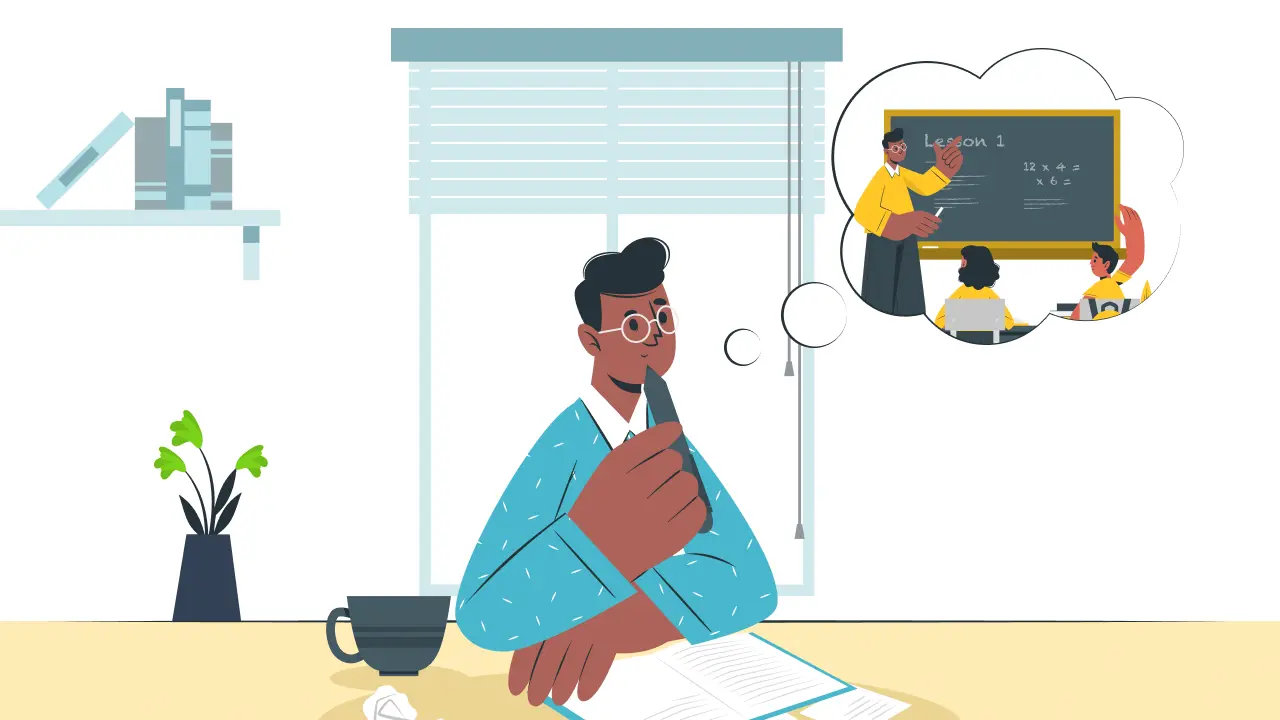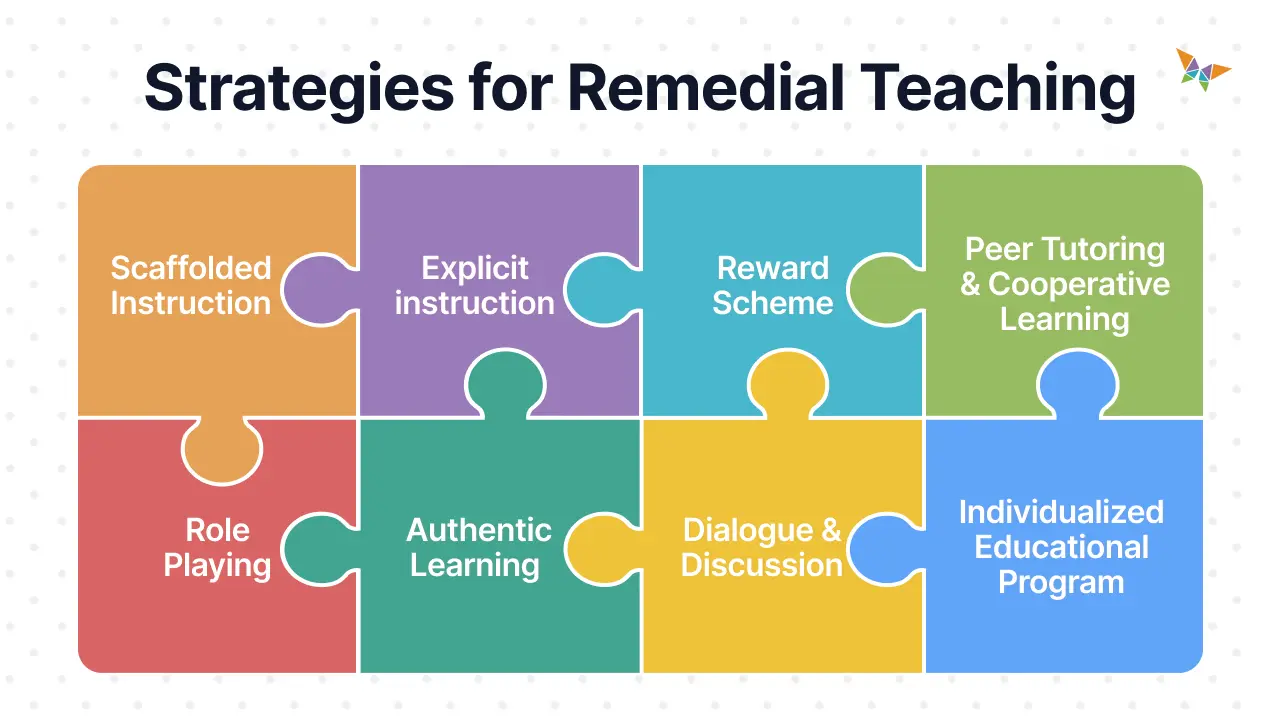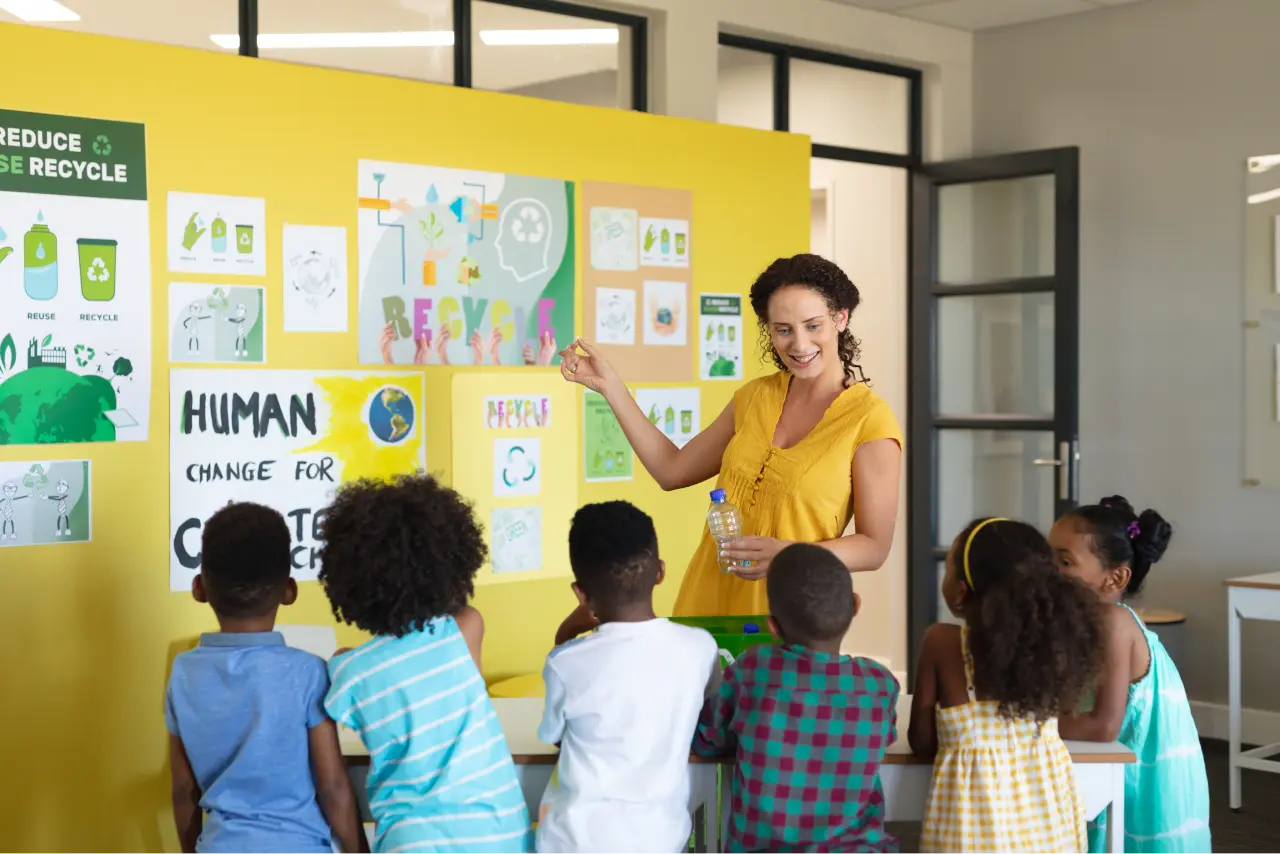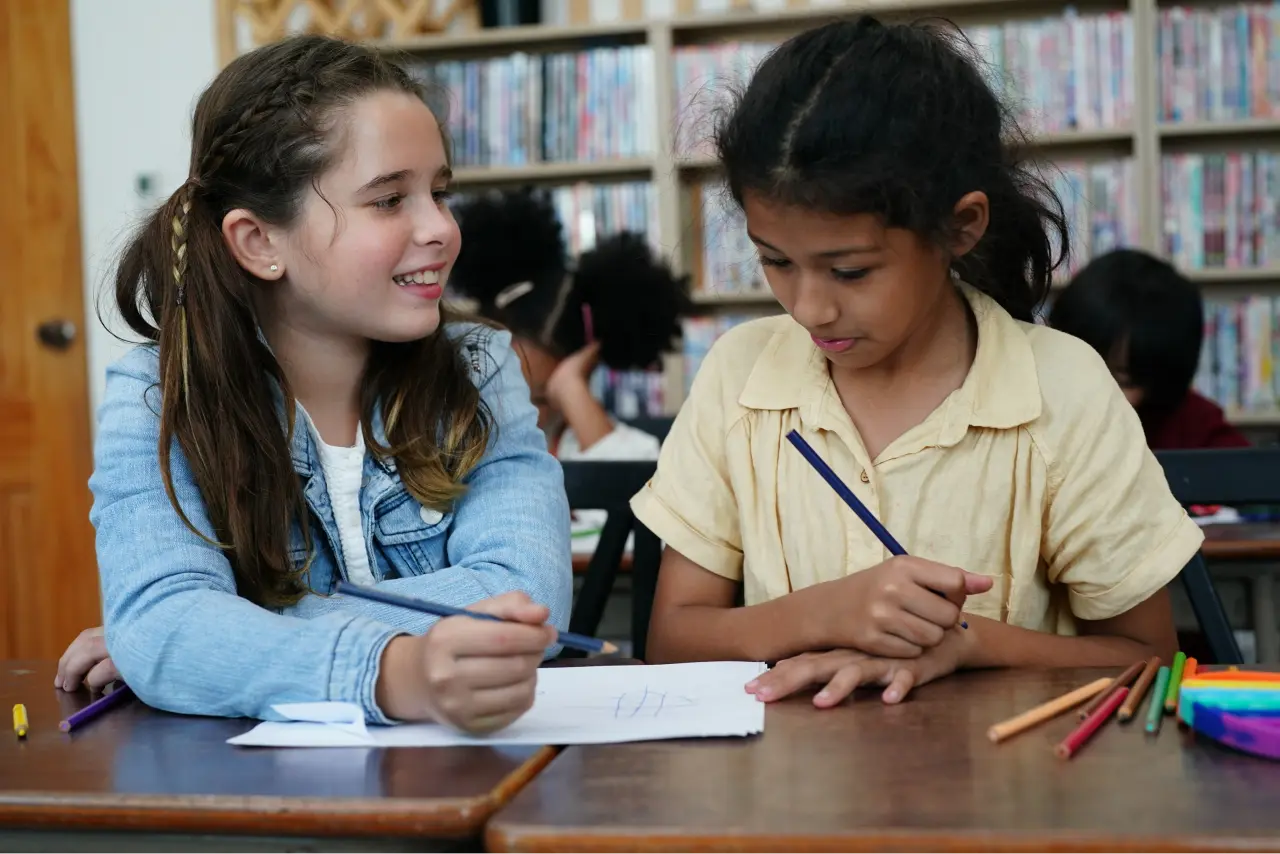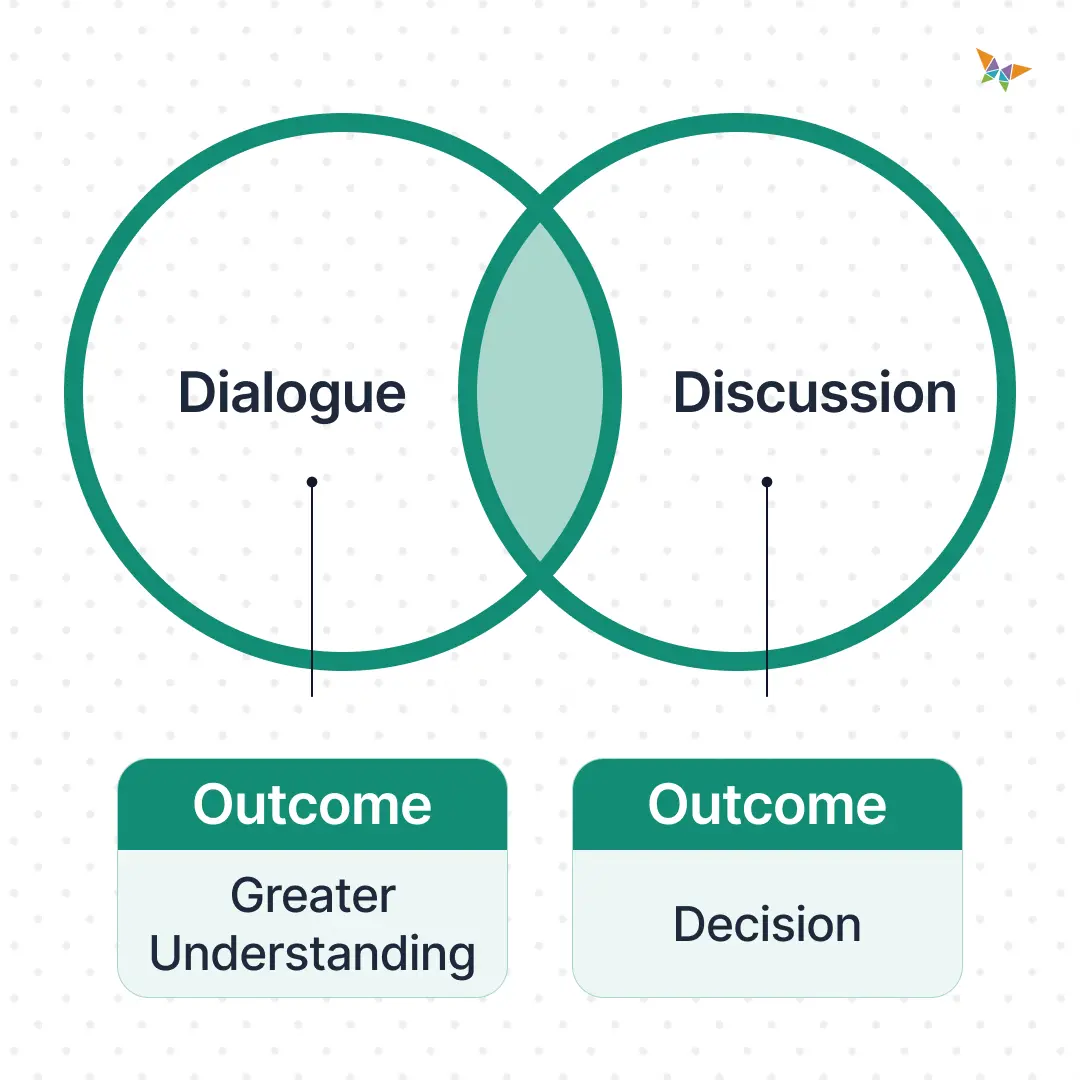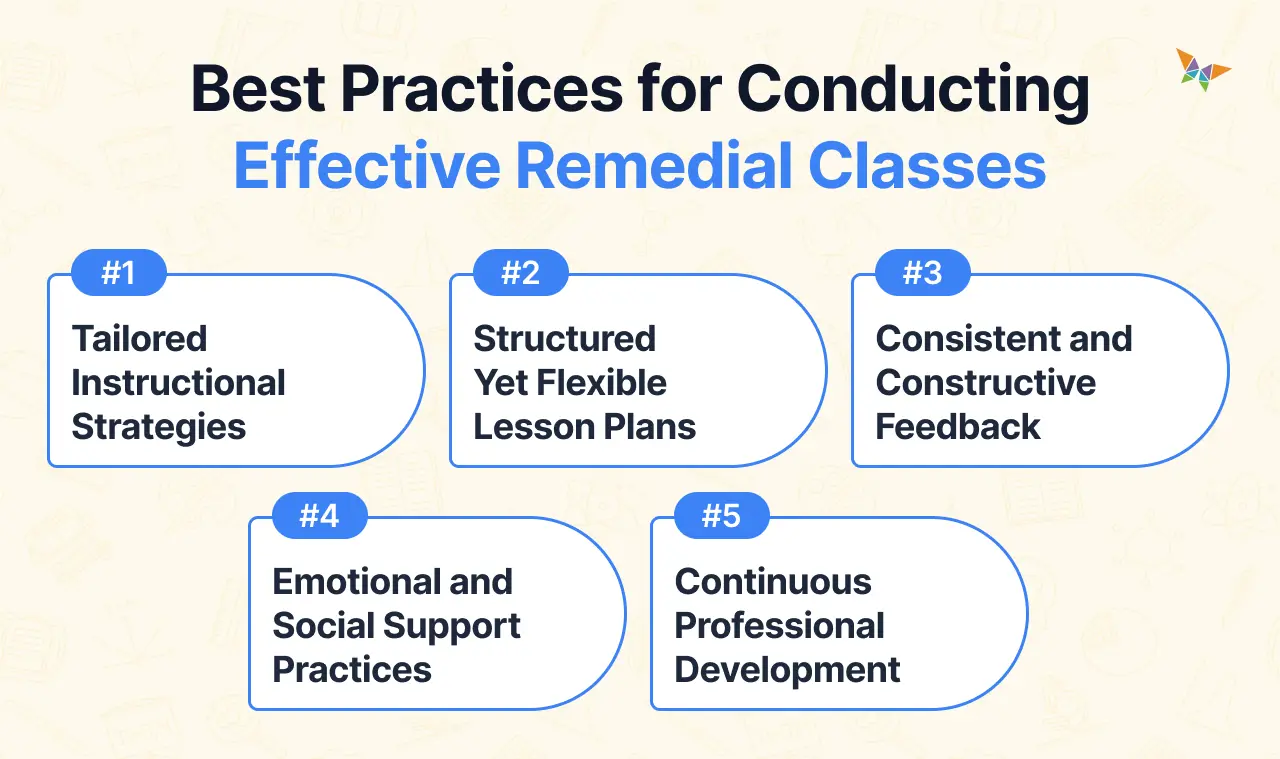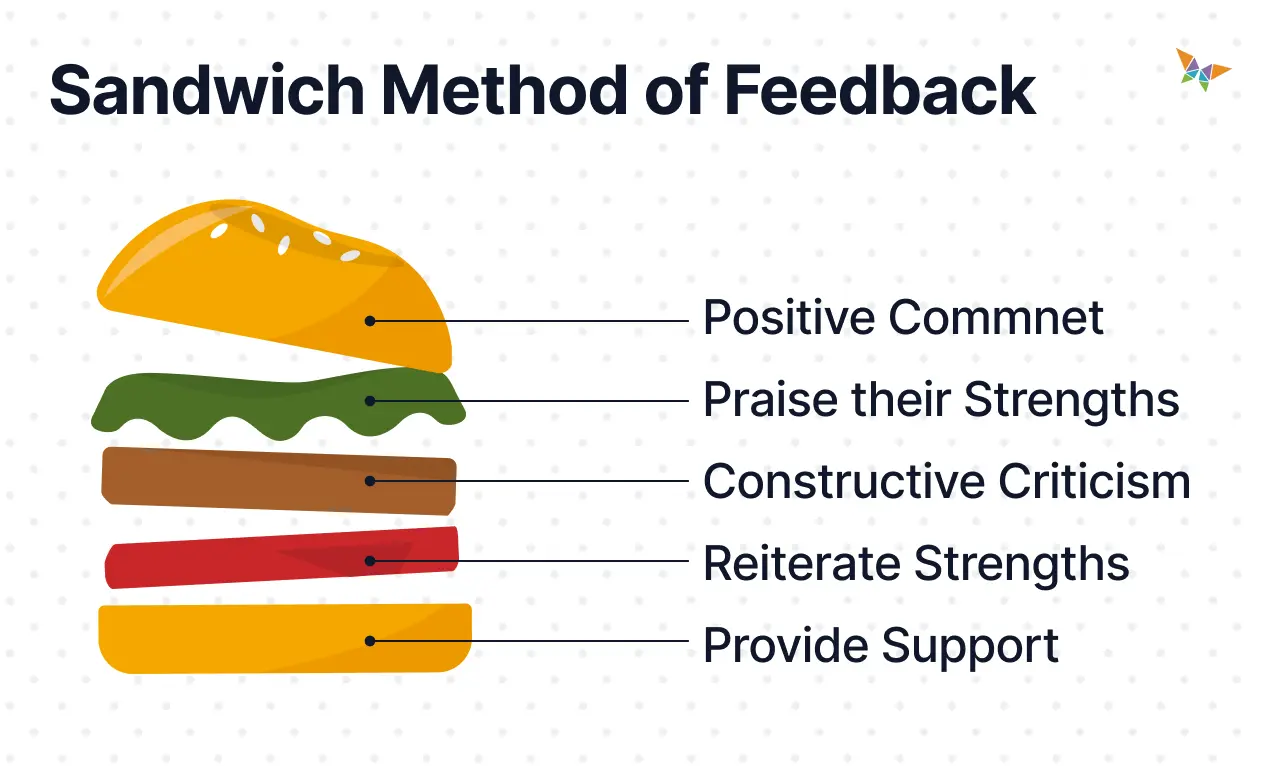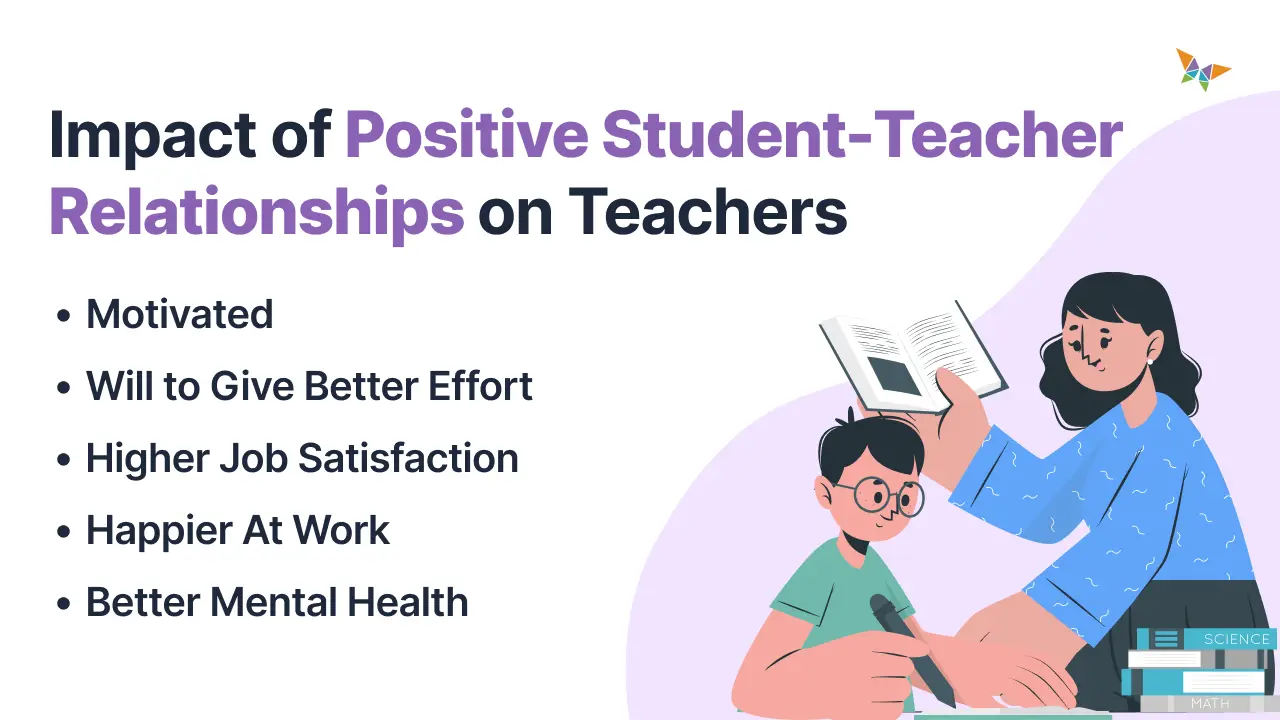As teachers, we often wonder how to teach those students who struggle to achieve their learning goals–no matter how hard they try? What methods can we use to effectively address and support their needs?
Well, remedial classes are the solution you’re looking for.
In this blog, we will explore:
From personalized learning approaches to integrating technology, we will provide practical insights that can transform remedial education into a powerful tool for fostering student success. Let’s begin by understanding the meaning of remedial classes.
Remedial education refers to specialized educational programs designed to meet the needs of students who struggle to meet academic standards in different subjects. This can be due to gaps in their learning or because the standard educational framework does not suit them.
In other words, remedial classes provide targeted interventions to help students who are falling behind academically or are not able to grasp specific core competencies.
Remedial education combines responsive and flexible support with regular school attendance. They can take a variety of forms such as after-hours catch-up sessions, non-formal education, equivalency programs, and specialized remedial courses. Let’s take a closer look with the help of an example.
Imagine a middle school student named Emma, who always dreaded her math classes. The numbers seemed to dance confusingly on the page every time she looked at her algebra homework. Seeing her struggle, Emma's teacher recommended she join the school's remedial math program, designed specifically for students who need a bit more help.
Twice a week, Emma and a small group of classmates meet with Mr. Thompson, a patient and encouraging math teacher known for his creative teaching methods. Unlike her regular classes, here she received individual attention, and the lessons were tailored to address her specific challenges.
Over the weeks, not only does her understanding improve, but her confidence soared. She began to participate more in her regular math class and even helped a friend with a tricky problem. Emma's journey in the remedial class turned her fear of math into a challenge she conquered successfully.
Now, you must be wondering what is the real purpose of remedial education? Come let’s find out.
Have you ever noticed a student struggling to keep up with the pace of your class? Or perhaps another who seems to have missed some critical building blocks along the way?
Remedial teaching steps in as a lifeline for such students.
This specialized teaching strategy is not just about helping learners catch up. It's about giving them the tools they need to succeed on their own terms.
Here are some other key purposes of remedial classes:
1. Closes Student Learning Gaps
Remedial teaching aims to identify specific gaps in a student's knowledge. By focusing on these gap areas, you can provide targeted lessons that help students catch up with their peers.
This is crucial for subjects like math and reading, where foundational knowledge is essential for understanding more complex concepts.
2. Enhances Student Understanding
Sometimes students may progress in their curriculum without fully understanding previous content. This leads to cumulative knowledge gaps.
Remedial teaching helps in revisiting these topics to reinforce learning and ensure a thorough comprehension of the subject matter.
3. Builds Confidence in Students
Struggling in academic areas can significantly affect a student's confidence. Remedial teaching helps to rebuild self-assurance by providing small successes and personalized support.
This boost in confidence can be pivotal in motivating students to engage more actively in their learning process.
4. Enhances Your Teaching Methods
Not all students learn the same way. And sometimes, even some of our most effective teaching methods may not bring results for everyone.
Remedial teaching allows you to go further and research new teaching styles and use alternative strategies.
5. Prevents Future Challenges
By addressing learning issues early, remedial teaching helps us prevent future educational challenges. It ensures students have a solid foundation before moving on to more advanced topics.
This reduces the likelihood of academic struggles in subsequent years.
The next question on your mind must be this:
If all students encounter challenging concepts at some point, should everyone be funneled into remedial classes? Or are these interventions meant for a handful of students?
To get to the bottom of this, let’s talk about how we can understand which students stand to benefit most from remedial classes.
Identifying which students need remedial classes isn't as straightforward as it sounds. Every classroom has a unique blend of learners, each with their own strengths and struggles. This makes the task of pinpointing who requires extra help a complex one. Yet, getting this right is crucial.
Why?
Because the right support at the right time can dramatically alter a student's educational trajectory. This can significantly boost both their skills and their confidence.
Let’s explore some effective strategies that can help us ensure that the right help reaches those who need it most.
1. Regular Assessments
Utilize frequent assessments, both formal and informal, to monitor student progress continuously in the classroom. These can include quizzes, classwork, homework, and standardized tests. The results provide concrete data that can help identify students who consistently perform below grade level. The identified students should then be offered remedial classes to support their learning needs and help bridge any gaps.
2. Observation and Documentation
Keep detailed records of student performance and behavior. Observations regarding participation, attention during lessons, and interactions with peers can all be indicators of potential difficulties.
Teachers should note any consistent patterns that suggest a student is not keeping up with the curriculum. Students who exhibit digressive patterns should be considered for remedial classes.
3. Feedback from Fellow Teachers and Staff
Collaborate with your fellow teachers, counselors, and school staff who interact with your students on a regular basis. They may provide additional insights into the student’s academic abilities and social behaviors, which can help in making a comprehensive evaluation.
For instance, if the science teacher reports that a student is often distracted and unable to focus on projects, while the physical education instructor notes samestudent's lack of participation in team sports. These observations suggest that the student might be facing challenges that affect both their academic and social development.
Identifying such patterns early on can guide the decision to encourage such students to engage in remedial education.
4. Parent and Guardian Consultations
Engage with parents and guardians to gain insights of the domestic environment of your students. They can offer valuable information about the child's history, health, daily habits, and attitudes toward school that may affect learning.
For example, a parent might share that their child has been staying up late due to family obligations, impacting their alertness and engagement in class. This kind of insight is crucial for understanding the external factors influencing a student's performance.
Based on such consultations, you can factor in the individual circumstances of each student when planning remedial education for them.
5. Diagnostic Tests
Implement above listed diagnostic tests specifically designed to uncover areas of weakness. These tests can help in pinpointing specific skills or concepts that a student has not mastered and may need additional help with.
6. Peer Comparisons
Compare a student’s work with that of their peers. Significant discrepancies in understanding and skill levels can signal the need for extra support.
7. Engagement and Motivation Levels
Assess students' engagement in class and their motivation towards schoolwork. Lack of interest and low participation rates can sometimes be linked to underlying academic challenges.
For example, there is a student who consistently shows little enthusiasm for group discussions and struggles to complete assignments. This could indicate difficulties in understanding the material or a lack of foundational skills.
Such observations are critical as they provide you clues to deeper issues that need addressing. Students displaying these signs can be considered for remedial classes to help them build the necessary skills and regain their motivation.
8. Teacher’s Intuition
Trust in the professional intuition developed from experience. Your gut feeling can often sense when a student may not be fully grasping the material or is shy about expressing difficulties.
Now, with a clear understanding of how to identify students who may benefit from remedial classes, the next critical step is planning and implementing these classes effectively.
It’s not enough to simply know who needs the extra help. We must also design support systems that directly address their unique challenges. Let’s look at how we can create remedial classes that are not only supportive but also conducive to real improvement.
Planning and implementing remedial classes is a deliberate process. It requires thoughtful consideration of content, teaching methods, and student engagement strategies.
Effective remediation isn't about re-teaching content in the same way it was initially presented. It's about making the learning experience accessible and meaningful for those who need more support.
In this section we’ll explore how to set up remedial classes that truly help students catch up and excel.
Step 1: Identify the Learning Gaps
Before anything else, let's focus on diagnosing the specific academic or social deficits our students are experiencing. Utilize formative assessments or above shared strategies tailored to pinpoint weaknesses in core subjects or social skills. This precise identification helps us understand where to concentrate our remedial efforts, ensuring that we target the root of the problem rather than just the symptoms.
Step 2: Set Clear Learning Objectives
Before you begin, ask yourself,
“What specific outcomes do I want my students to achieve?”
Setting clear, measurable objectives is crucial. This might involve mastering a particular math skill, improving reading comprehension, or writing a well-structured paragraph.
With these goals in mind, you can tailor your teaching practices and assessments to be directly aligned with the desired outcomes.
Step 3: Select Appropriate Materials and Resources
Choosing the right instructional materials is critical for addressing the identified gaps. Opt for resources that are aligned with the remedial goals and can support differentiated learning strategies.
These might include manipulatives for math, phonics programs for reading, or interactive software for science concepts, all tailored to reinforce foundational skills.
Step 4: Adapt Teaching Strategies
Effective remediation requires pedagogical flexibility. Employ a variety of teaching strategies such as direct instruction, guided practice, and cooperative learning to accommodate diverse learning styles.
For instance, using multisensory approaches can greatly benefit students with learning differences, enhancing their understanding and retention of the material.
Step 5: Create Individualized Learning Plans (IEPs)
Every student's educational needs are unique, especially in a remedial setting. Develop personalized learning plans that outline specific steps and strategies to meet the set objectives.
These plans should consider the student's pace, learning style, and the severity of the academic gaps, providing a tailored roadmap for success.
Step 6: Provide Structured Feedback
Feedback in remedial classes should be immediate, constructive, and encouraging. Instead of just pointing out what’s wrong, focus on how to improve.
A gentle nudge like, “I noticed you tried really hard to solve that problem—let’s look at it together,” can keep spirits high and encourage a growth mindset.
Step 7: Monitor Progress and Adjust Instruction
Continuously assess both the students' progress and the effectiveness of the instructional strategies. Formative assessments play a key role here, providing ongoing data that can guide instructional adjustments.
This agile approach ensures that teaching methods remain aligned with student needs and are adjusted dynamically based on real-time performance. For this you can maintain individual learning logs, different kinds of diagnostic tests, one-on-one sessions, or skill-based checklists.
You can also opt for technology to monitor student progress in your remedial classes. For example, you can use analytics tools integrated within educational apps to analyze trends and patterns in student performance. This data can help in making informed decisions about instructional strategies and necessary adjustments in real-time.
Step 8: Collaborate with Colleagues
You’re not alone in this journey. Collaborate with other teachers, special education aides, and school counselors to share insights and strategies. Maybe the art teacher has noticed a way your student excels visually? Integrating these insights can create a more tailored approach to meet the diverse needs of your students.
Step 9: Celebrate Achievements
Recognizing and praising students' progress in remedial classes fosters a positive learning environment and builds their confidence. Celebrations are crucial for motivating students and reinforcing their continued effort.
To celebrate positive achievement in the remedial class, you can have a learning milestone party, give out certificates of achievement, and encouragement notes to the students.
Step 10: Reflect and Evaluate
After each remedial cycle, conduct a thorough review of the educational outcomes. Reflect on the effectiveness of the remedial strategies and student engagement. This reflective practice not only assesses the success of the intervention but also informs future remedial plans, ensuring that we continue to evolve and enhance our teaching methods.
Implementing these steps with a focus on pedagogy ensures that our remedial classes are not just supplementary but a fundamental component of our students' educational recovery and success.
Now that we've explored how to plan and implement remedial classes effectively, let's discuss some key strategies that can enhance our remedial teaching efforts. After all, every teacher wants to see their students succeed, right?
So, how can we ensure that our teaching methods are as effective as possible?
Here are some strategies:
Whether you're working with students who need just a slight nudge or those who require significant support, the right strategies can make all the difference.
Let’s explore strategies for remedial teaching that can boost understanding, engagement, and success for every student.
1. Scaffolded Instruction
Think of scaffolded instruction as building a learning ladder. You start where the students are and gradually remove the supports as they gain competence.
For instance, you might begin a math lesson with a full demonstration, then solve a problem together, and finally, have students try it on their own.
This gradual release of responsibility allows students to build confidence and mastery step-by-step.
2. Explicit Instruction
Sometimes, clarity is the key. With explicit instruction, you leave nothing to chance. Clearly explain concepts, model skills, and guide students through the process.
Remember the time you showed students exactly how to deconstruct a complex sentence?
Break down lessons into clear, manageable parts to help students grasp more challenging concepts.
3. Peer Tutoring and Cooperative Learning
In remedial classes, every student is working to overcome academic challenges. Peer tutoring and cooperative learning can play a vital role in building confidence and understanding.
This strategy focuses on collaboration and mutual support, recognizing that each student brings a unique perspective and may understand different facets of the material.
Arrange your class into small groups, where each member is encouraged to contribute by explaining parts of the lesson they comprehend best. This method allows students to take on both teaching and learning roles. This reinforces their knowledge through explanation and benefiting from the insights of their peers.
Such cooperative learning helps develop critical social skills and empathy, as students learn to work together and respect diverse learning paces. It also fosters a supportive classroom atmosphere. This is crucial for students in remedial settings, where encouragement and collective effort are key to academic progress.
4. Individualized Educational Program (IEP)
For students with specific educational needs, an IEP can be a game-changer. It is a customized plan that involves setting individual goals for a student based on their unique learning requirements.
It’s like having a roadmap that’s designed just for one student, ensuring they get the precise support they need. The purpose of an IEP is to provide these students with a structured learning environment that promotes their academic success and personal growth.
By setting clear, measurable goals, the IEP will allow you to focus on adapting the educational content and delivery methods. This will help you to match the student’s unique learning abilities and challenges.
5. Reward Scheme
Who doesn't love a little recognition? Setting up a reward scheme can motivate students to put forth their best effort.
Whether it’s stickers for younger kids or points towards a class reward for older students, acknowledging their hard work can boost morale and encourage a positive attitude toward learning.
Additionally, this could also mean introducing a friendly competition among students by setting up group challenges or leaderboards to further motivate them to achieve their goals.
6. Dialogue and Discussion
Encouraging open dialogue and discussion in the classroom is like turning the learning process into a two-way street. It's not just about you imparting knowledge; it's also about listening to what students have to say.
This method helps students feel heard and valued, which can boost their confidence and engagement.
For example, you might set aside time after a lesson for students to discuss how the topic relates to their own experiences, or what they found challenging. This not only deepens understanding but also builds critical thinking skills.
7. Authentic Learning
Authentic learning involves linking classroom lessons to real-world scenarios. This strategy helps students see the relevance of what they're learning and understand how to apply it outside of school.
For instance, if you’re teaching a math lesson, you might show how the math skills can be used to solve everyday problems, like budgeting or planning a trip.
By making learning applicable to their lives, students are more likely to be motivated and interested in the material.
8. Role-playing
Role-playing isn't just for drama class. It's a powerful tool in any subject. This strategy allows students to step into different roles or scenarios, helping them understand various perspectives and practice their skills in a simulated environment.
For example, in a history class, students might role-play as historical figures to debate key issues of their time. In a science class, they could role-play as researchers solving a critical problem.
This active involvement can make learning more dynamic and memorable.
Let’s now take a closer look at how to put these strategies into action in the most effective way.
In the following section, we will read the best practices that will help you refine your approach, ensuring that every session you conduct is as impactful as possible.
Best Practices for Conducting Remedial Classes
When conducting remedial classes, certain best practices can profoundly impact students' learning experiences and outcomes. Here are tailored strategies to ensure that your remedial classes are as effective as possible:
1. Tailored Instructional Strategies
Use teaching strategies that are specifically designed for remedial learning, such as breaking down complex information into smaller, more digestible parts.
For instance, if teaching a complex algebra concept, start with the basic operations. Then gradually introduce variables and equations only after students have mastered the foundations.
2. Structured Yet Flexible Lesson Plans
Prepare lesson plans that are structured enough to provide clear guidance and direction but flexible enough to allow adaptations based on students' in-the-moment learning needs.
For example, be prepared to extend a discussion on a topic if students show particular interest or difficulty.
3. Consistent and Constructive Feedback
Provide regular and specific feedback that helps students understand what they are doing well and where they need improvement. Make feedback constructive and supportive to encourage students and build their confidence.
For example, use the "sandwich" feedback method, where constructive criticism is sandwiched between positive comments.
4. Emotional and Social Support Practices
Recognize that remedial students may also need emotional and social support to succeed. Implement practices that promote social skills, resilience, and self-esteem.
Regularly check in with students about how they are feeling, both academically and personally, and provide support or referrals to other professionals when necessary.
5. Continuous Professional Development
As a teacher leading remedial classes, staying on top of the latest teaching strategies and educational research is key. Make it a point to regularly dive into professional development opportunities.
This will not only refresh your teaching toolkit but also ensure you’re bringing the most effective and innovative methods into your classroom to support your students effectively.
Now, let’s take a moment to reflect on the real impact of remedial classes. Did you wonder how these specialized lessons help you as a teacher?
In this next section, we'll look at how remedial classes can be a game-changer for educators.
Did you know that remedial education has ripple effects for you as well. From enhancing teaching practices to personal and professional growth, the advantages are manifold.
Let's delve into the myriad benefits that remedial education brings to the table.
1. Professional Satisfaction
There’s a unique satisfaction that comes from seeing your students succeed, especially those who struggled initially. Remedial teaching offers the chance to witness and contribute to significant student transformations.
2. Skill Enhancement
Teaching remedial classes pushes you to refine your teaching strategies and adapt to diverse learning needs. This enhances your overall teaching skills. Moreover, addressing the unique challenges presented by these classes requires you to revisit and improve your methods regularly.
This process ensures that your teaching skills remain current and effective, fostering a dynamic and responsive educational environment.
3. Deeper Student Relationships
Working closely with students in a remedial setting allows you to build deeper, more meaningful relationships with students. This allows you to improve on your teacher intuition, your soft skills and can be incredibly rewarding personally.
4. Improved Understanding
Improved Understanding: Engaging in remedial teaching helps you gain a deeper understanding of students' learning styles, strengths, and weaknesses. This enhances your ability to tailor instruction and teach effectively.
5. Enhanced Differentiation
You learn to differentiate instruction more effectively in remedial classes. This is because you get to work with students at different skill levels. And this allows you to adapt teaching strategies and materials to meet diverse learning needs.
6. Data-Driven Instruction
Remedial teaching relies on data analysis to identify students' areas of difficulty. It tracks their progress over time, enabling you to make informed instructional decisions.
As we wrap up our exploration of remedial teaching, let's pause and consider the profound impact a dedicated teacher can have on a student's life.
Think back to a teacher who made a difference for you—chances are, they helped you conquer a challenge or believed in you when you needed it most. Isn't it remarkable how those moments stay with us, long after we leave the classroom?
For many students, especially those who have faced academic struggles, a teacher who helps them overcome barriers doesn’t just teach them; they leave an indelible mark on their hearts.
For many students, especially those who have faced academic struggles, a teacher who helps them overcome barriers doesn’t just teach them; they leave an indelible mark on their hearts.
To be that memorable teacher, it's essential to continually develop and refine your own skills and approaches. After all, the journey of teaching is as much about growing yourself as it is about growing your students.
If you're inspired to enhance your teaching skills and become an even more impactful educator, why not take the next step?
Book a 1-1 free session with a Suraasa mentor and get free personalized career guidance.
Whether you’re looking to deepen your understanding of remedial teaching or explore new educational strategies, a Suraasa mentor can help you discover your full potential as a teacher.





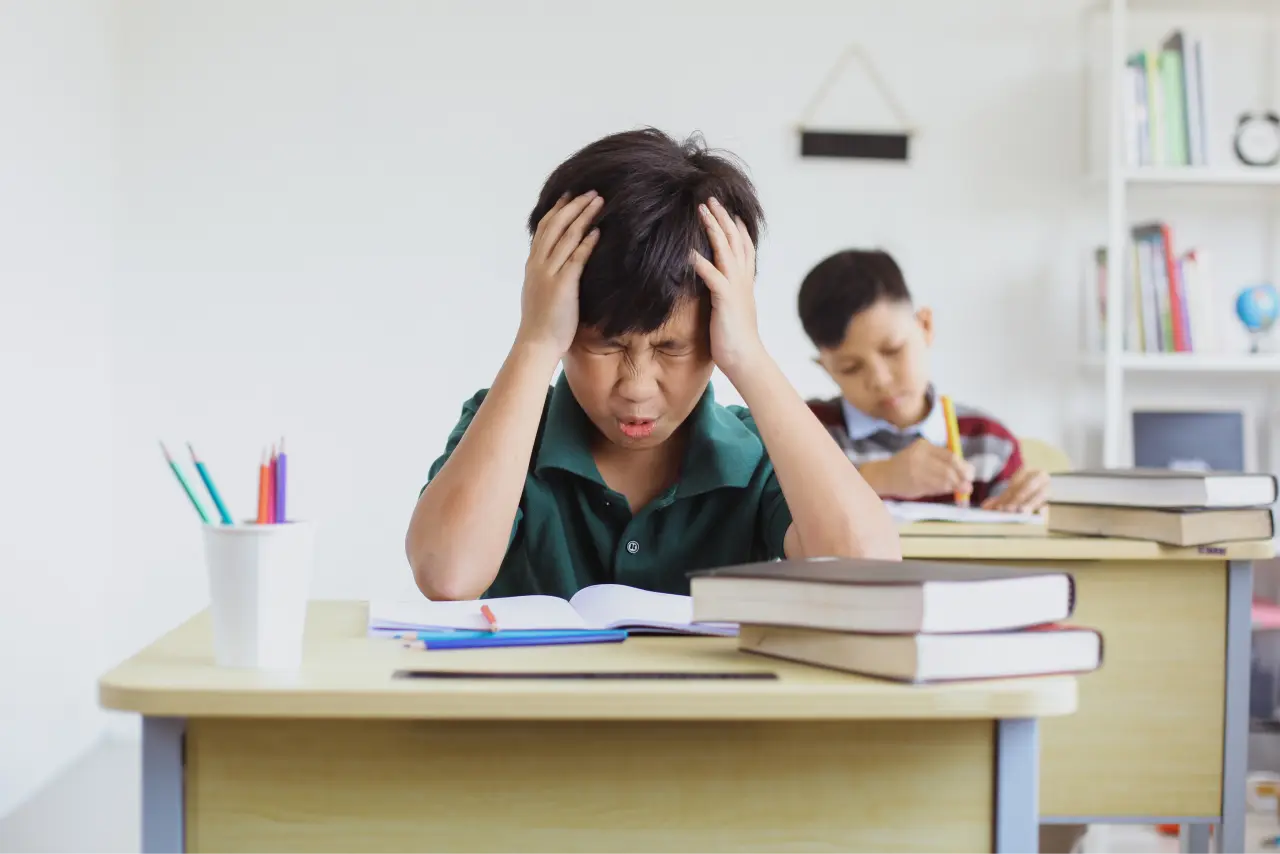

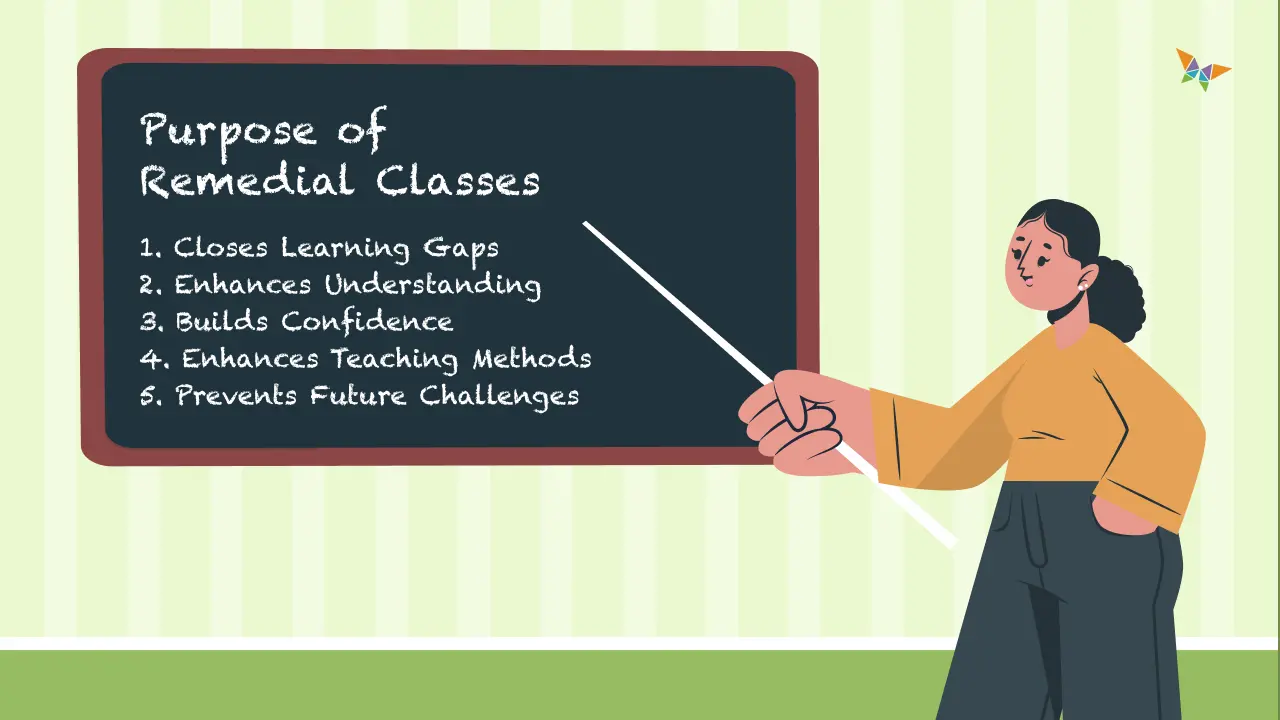
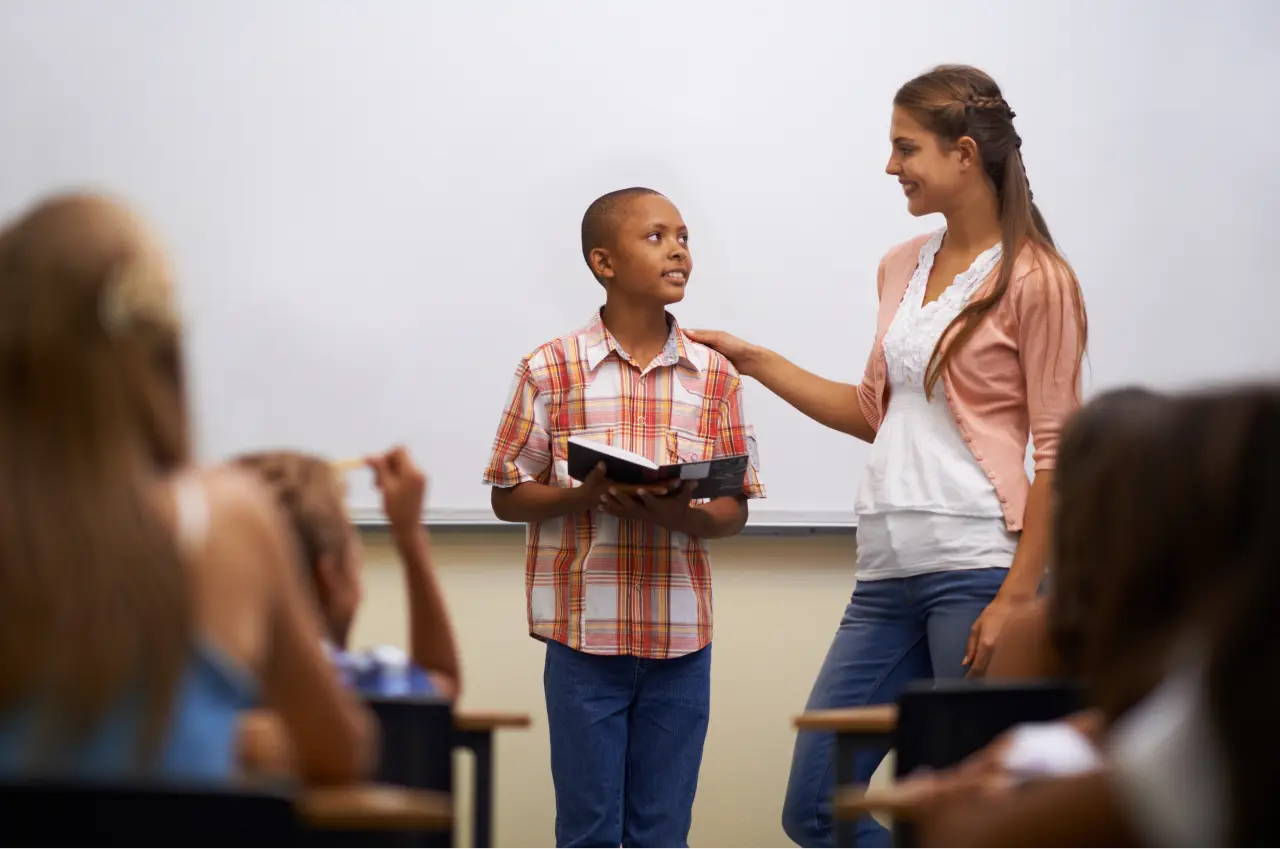







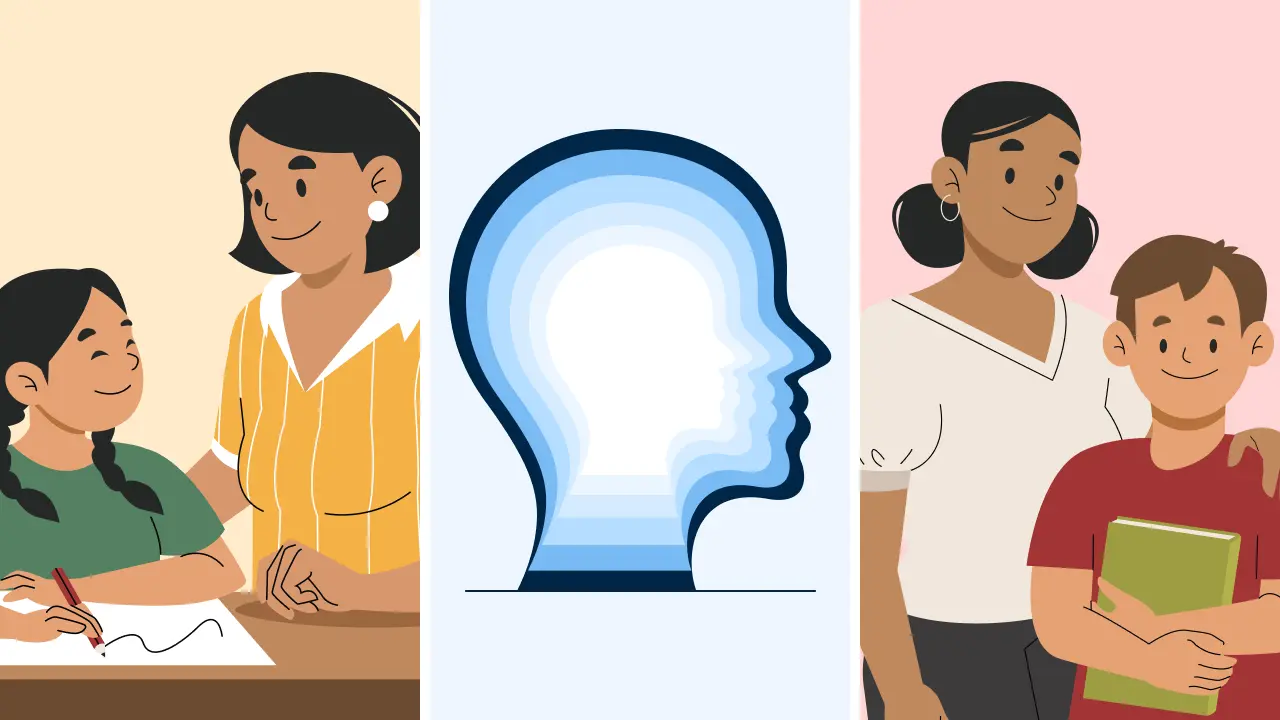
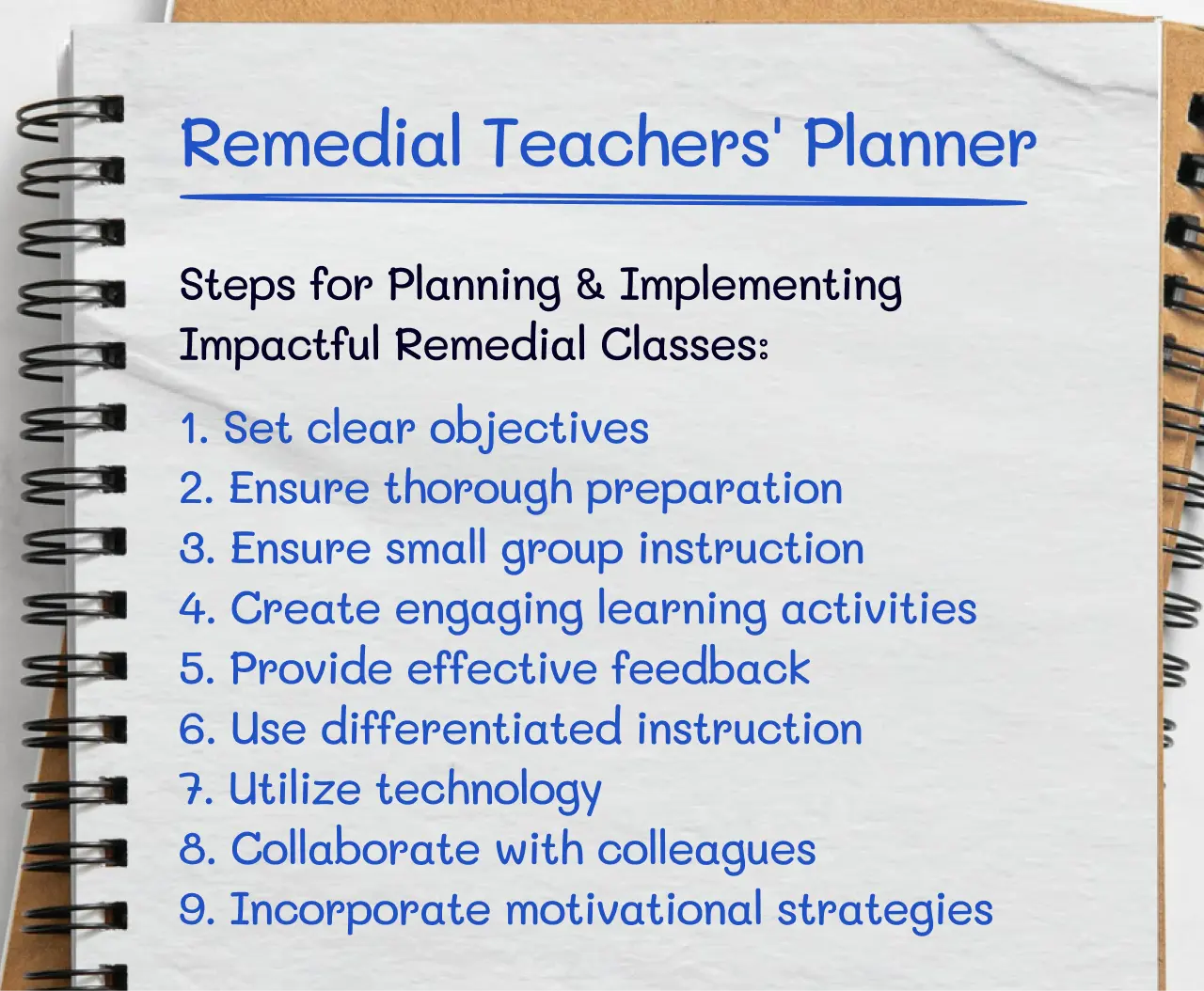

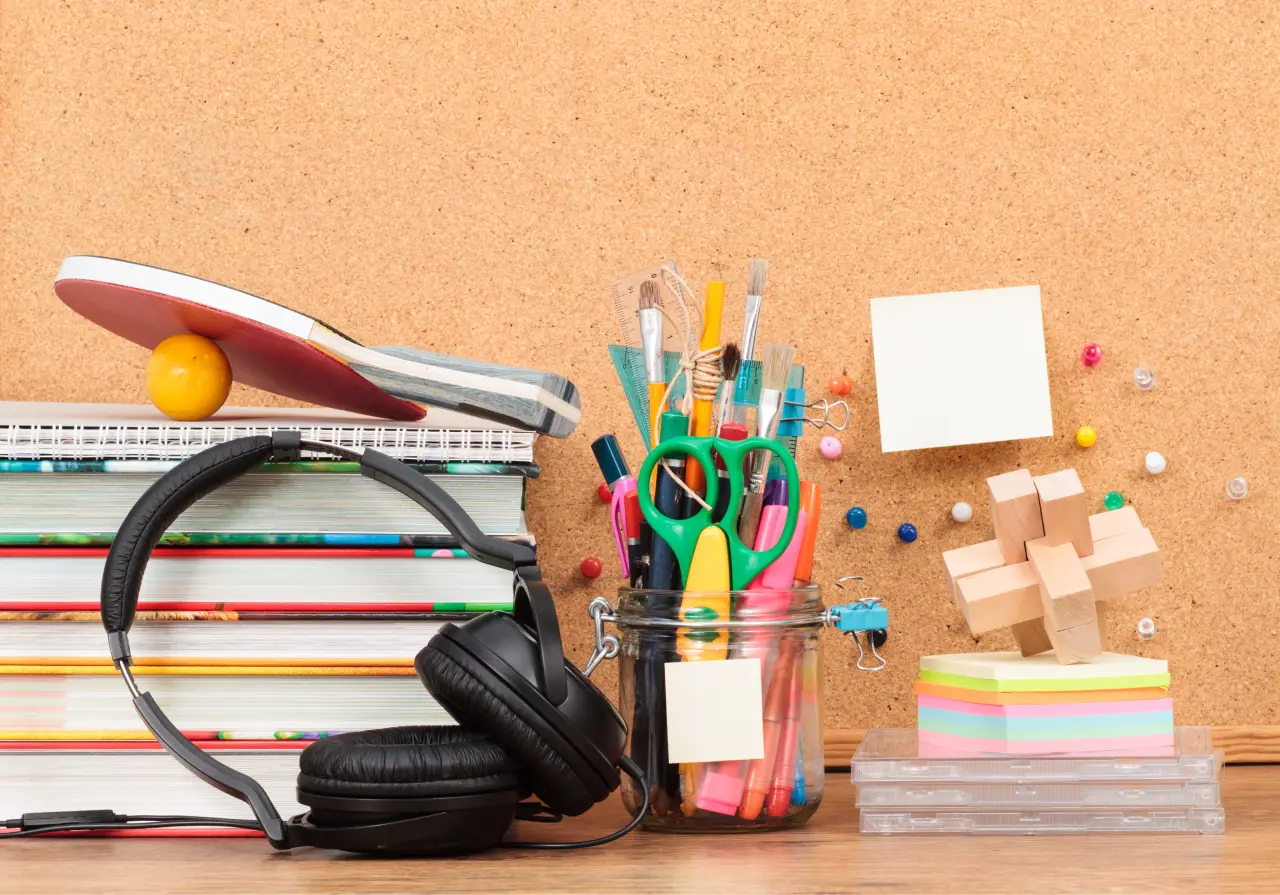




.png)

